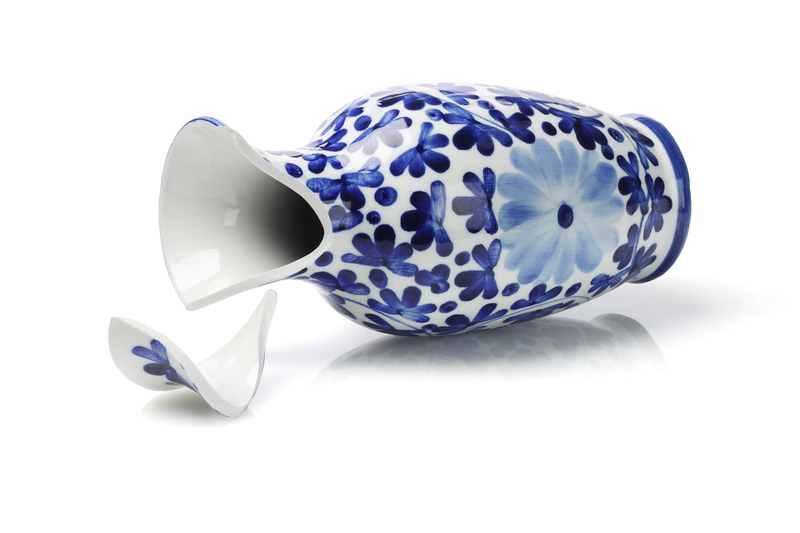Simple and Effective Tips for Moving Your Bed and Mattress
Posted on 11/06/2025
Simple and Effective Tips for Moving Your Bed and Mattress
Moving your bedroom furniture, especially your bed and mattress, can be one of the trickiest parts of any relocation. Beds are large, often bulky, and mattresses can be surprisingly unwieldy. Whether you're moving across town, into a new apartment, or simply rearranging the rooms in your home, knowing the right techniques will save you time, effort, and prevent potential injuries or damage. In this comprehensive guide, you'll find simple and effective tips for moving your bed and mattress to make your moving experience seamless, smooth, and stress-free.
Why Moving Beds and Mattresses Can Be Challenging
Moving bed frames and mattresses comes with its unique set of challenges due to their size, weight, and awkward shape. The risk of damaging your bed or mattress, injuring yourself, or scratching your home walls and floors increases if you don't follow the best practices. Moreover, improper moving can damage your mattress support, limit its comfort, and even void its warranty. That's why it's crucial to know how to move mattresses and bed frames safely and efficiently.
Main Challenges When Moving Your Mattress and Bed
- Bulky Size: Mattresses, especially queen or king sizes, can be hard to maneuver through stairways and hallways.
- Heavy Weight: Some bed frames (wood, metal, or upholstered) and mattresses can be very heavy.
- Delicate Materials: Both beds and mattresses can be damaged by improper handling.
- Limited Handling Points: Mattresses are hard to grip and carry without proper equipment.
- Risk of Personal Injury: Back injuries or pinched fingers are common when lifting bulky furniture incorrectly.

Preparation: Getting Ready to Move Your Bed and Mattress
Preparation is a crucial step in moving any piece of furniture, particularly your bed and mattress. Before moving day, get everything ready with these essential steps:
1. Gather the Right Tools and Supplies
- Mattress bag or cover: Protects against dust, dirt, and moisture during the move.
- Moving straps: Makes lifting heavy items safer and more ergonomic.
- Furniture sliders: Useful for sliding beds on hardwood floors without scratches.
- Tool kit: For disassembling bed frames.
- Plastic wrap and moving blankets: Shields your bed frame parts and headboard from dings and scratches.
- Markers and zip-lock bags: For labeling and organizing screws, nuts, and bolts.
2. Measure Everything
Before moving your bed or mattress, measure doorways, hallways, and staircases to ensure everything will fit through the tight spaces of your old and new home. This step can help you avoid getting stuck or having to unexpectedly remove doors from their frames on moving day.
Step-by-Step Guide: How to Move Your Bed and Mattress
Step 1: Strip Down the Bed
Remove all bedding, pillows, mattress toppers, and linens. Pack them in separate containers or vacuum-sealed bags to minimize volume.
Step 2: Disassemble the Bed Frame
- Use the right tools (typically an Allen wrench or a screwdriver) to undo the bolts and screws.
- Place all screws and small hardware in a labeled plastic bag and tape it securely to the frame or headboard.
- Protect delicate parts using moving blankets or bubble wrap to prevent scratches and chips.
- If your bed has a headboard or attached storage, move these separately to avoid damage.
Step 3: Prepare the Mattress for Moving
- Slide your mattress into a protective mattress bag or cover to guard it against dust and damage.
- Seal it tightly with packing tape if you're moving during rain or snow to keep it dry.
- For memory foam mattresses, avoid folding or bending them, as this can damage the foam structure. Hybrid and spring mattresses can tolerate a slight fold--just don't crease them sharply.
Tip: If you don't have a mattress bag, use thick plastic sheeting and secure it snugly around the mattress with tape.
Step 4: Moving the Mattress Out
- Mattresses are awkward, not just heavy! Always enlist a friend or family member if possible.
- Maneuver the mattress by standing it on its side. This makes it easier to fit through doorways.
- Use moving straps for a more secure hold, especially for larger mattresses like queen, king, or California king.
- If you're moving alone, consider a mattress sling or harness.
Remember: Avoid dragging your mattress across the floor, as it collects dirt and can damage the fabric or structure.
Step 5: Transporting the Bed Frame
- Move each section--headboard, footboard, side rails, and slats--carefully and separately.
- Wrap corners and edges with moving blankets or cardboard for extra protection.
- Use furniture sliders or a dolly for especially heavy or ornate parts.
Step 6: Loading Into the Moving Vehicle
- Start with the mattress: Lay it flat on top of other boxes or against a wall to avoid warping.
- Upright for short trips: If you're moving locally, you can stand the mattress upright on its long edge to maximize space.
- Secure both bed frame parts and the mattress to prevent shifting during transit.
Never place heavy items on top of your mattress, as this can cause dents or damage the material.
How to Move a Bed and Mattress Upstairs or Downstairs
Negotiating stairs with large furniture can be tricky. Here's how you can move your bed and mattress upstairs or downstairs safely:
- Clear your path: Remove rugs, obstacles and ensure there is good lighting.
- Use two people: Have one person guide the mattress or bed frame, while the other lifts from the bottom.
- Bend your knees and lift with your legs, not your back, to avoid injuries.
- Take breaks if needed: Don't rush! It's better to be careful than risk damage or injury.
How to Move a Mattress by Yourself
If you need to move a mattress by yourself, consider the following safety techniques:
- Invest in a mattress carrier or dolly designed for this purpose.
- Fold the mattress gently and secure it with straps, but only if the mattress type allows for folding.
- Protect your back by keeping the mattress close to your body and lifting from the knees.
Special Tips for Moving Different Types of Mattresses
Memory Foam and Latex Mattresses
- Do not fold sharply or bend excessively, as this can cause damage.
- Always move these mattresses flat, if possible, and avoid placing things on top of them during transit.
Spring and Hybrid Mattresses
- More flexible, but still avoid extreme bending.
- Use a sturdy mattress bag for added protection from tears and stains.
Pillow-Top Mattresses
- Extra bulk requires even more care, both when wrapping and carrying.
- Make sure the top pillow layer is facing upward or to the side during transit.
Reassembling Your Bed After the Move
Once you've arrived at your new location, reassembly is straightforward if you prepared properly beforehand:
- Unpack all labeled parts and hardware.
- Assemble the frame first, following your original instructions or taking photos during disassembly as a reference. *Tip: Most bed manufacturers have PDF instructions online if you've lost yours.*
- Place the mattress back on top, remove protective coverings, and inspect for any signs of damage or moisture.
- Make your bed with fresh sheets and enjoy a great night's sleep in your new space!
Expert Tips for a Hassle-Free Bed and Mattress Move
- Plan ahead: Setting aside plenty of time for preparation and moving keeps you organized.
- Enlist helpers: Friends or family make the process much safer and faster.
- Professional movers: If you have a heavy or ornate bed, or you're unable to move the furniture yourself, hiring professionals is worth the investment.
- Don't forget to check elevators, moving truck sizes, and consider weather conditions on the day of the move.
- Clean your mattress and bed frame before moving for easier setup at your new home.
- Use furniture dollies anytime you need to transport heavier pieces over longer distances.
Common Mistakes to Avoid When Moving Your Bed and Mattress
- Skipping protective covers: This leads to dirty, stained, or damaged mattresses.
- Not labeling hardware: Risk of losing essential screws and bolts for reassembly.
- Underestimating the size and weight of king or queen beds--never try to move them solo.
- Dragging furniture across floors, which can result in scratches or damage.
- Allowing mattresses to get wet: This can cause mold, mildew, and void your warranty.

Frequently Asked Questions About Moving Beds and Mattresses
How can I move my mattress without damaging it?
Use a mattress bag or thick plastic cover, never drag it, and always keep it dry. Carry with a helper if possible, and don't bend foam or latex mattresses.
Can I move a king size mattress by myself?
Usually, it's best to ask for help. If you must move it alone, use a mattress harness, carrier, or dolly, and keep the path clear of obstructions.
How should I protect my bed frame during a move?
Disassemble it fully, keep hardware together in a labeled bag, and wrap wood or metal parts with moving blankets. Protect sharp corners with extra padding.
Is it okay to fold a mattress when moving?
Check the manufacturer's recommendations. Spring and hybrid mattresses can sometimes be gently bent. Never fold memory foam sharply, as this can permanently damage the internal structure.
Conclusion: Make Moving Beds and Mattresses Simple and Stress-Free
Moving your bed and mattress doesn't have to be a daunting task. With these simple and effective tips for moving your bed and mattress, you'll have the knowledge and confidence you need for a hassle-free experience. Prepare in advance, protect your belongings, and always prioritize safety--and you'll be relaxing in your freshly made bed in no time!
For more moving advice and helpful tips on home organization, be sure to explore our other resources. A little planning and the right techniques truly make all the difference on moving day!







